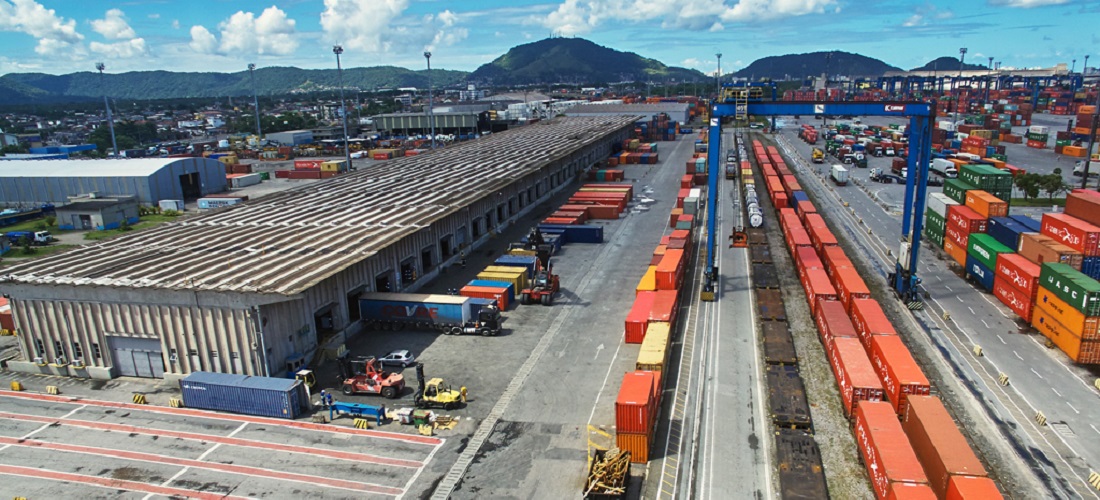
Santos Port Authority Opts Out of STS10 Terminal
Jan, 17, 2024 Posted by Gabriel MalheirosWeek 202403
The Santos Port Authority (APS) is no longer interested in pursuing the implementation of the STS10 terminal at the Port of Santos. The creation of a new container terminal had been proposed during the former federal administration and aimed to address issues related to the escalating demand for container cargo at the port.
According to information obtained by Agência iNFRA from a source within the port authority, the currently undertaken measures are deemed sufficient to preempt port saturation and adequately address demand in the medium term.
These measures include expanding the Ecoporto area, a terminal primarily designated for general and container cargo, albeit presently handling a minimal volume of cargo boxes. The regularization of the company’s provisional contract is part of this expansion plan. Concurrently, efforts are being made to expand both the BTP (Brazil Terminal Portuário) and Santos Brasil terminals. Additionally, the relocation of the passenger terminal to Saboó is on the agenda.
Moreover, another source explained that the administrative structure of STS10 was conceived to align with the port’s concession model. With the recent decision to maintain the port authority in public hands, the logic behind proceeding with the terminal implementation has diminished.
However, the final decision on whether to proceed with the construction of a terminal at the Port of Santos rests with the Ministry of Ports and Airports, which, as of now, has not provided a definitive indication of whether it will halt the process. The previous administration estimated that STS10 could nearly double the port’s capacity for handling containerized cargo.
See below a comparison of container exports and imports between Jan 2019 and Nov 2023, according to data from Datamar’s pioneering maritime intelligence service.
Container Exports and Imports | Jan 2019 – Nov 2023 | TEU
Source: DataLiner (click here to request a demo)
Port polygon area
Looking ahead, there are plans for the long-term expansion of the port’s polygon, with a focus on building a large container terminal on Bagres Island and integrating continental areas of São Vicente.
During earlier discussions on the Port of Santos’ concession, which the federal government ultimately discarded, a decision was taken to reduce the port’s polygon by removing the Bagres and Caneu islands from it. The intention was to retain federal control over these areas and later determine whether they would be assigned to a private administrator or undergo another form of development.
Ongoing discussions surrounding the redesign of the Port of Santos’ polygon are still under consideration by the Ministry of Ports and Airports. Sources suggest that Anderson Pomini, the president of APS, has formally requested the re-inclusion of Bagres Island into the port’s jurisdiction.
Upcoming visit
The upcoming visit of President Lula and Vice President Geraldo Alckmin to the port on the anniversary of the Port of Santos (February 2) is expected to bring announcements regarding future projects. Among these, the calendar of the tunnel’s construction linking Santos to Guarujá, expected to occur between October of this year and January 2025, is set to be disclosed.
Other projects likely to have their schedules unveiled on this occasion include enhancements to the port’s perimeters in the Alemoa neighborhood and the deepening of the access channel. Simultaneously, plans are underway for the APS and the ministry to continue exploring the feasibility of a Public-Private Partnership (PPP) for the port’s dredging service throughout the existing contract.
-
Ports and Terminals
May, 29, 2024
0
BYD Explorer 1 Docks at Port of Suape with Record Shipment of 5,500 Vehicles
-
Trade Regulations
Mar, 20, 2024
0
Brazilian Farming Sector Breaks New Ground: 100 Export Authorizations Granted to Untapped Markets
-
Grains
May, 12, 2023
0
China to stabilize soybean imports, diversify sources
-
Other Cargo
Sep, 13, 2021
0
Fertilizer imports rise 21.4% in June year-on-year

